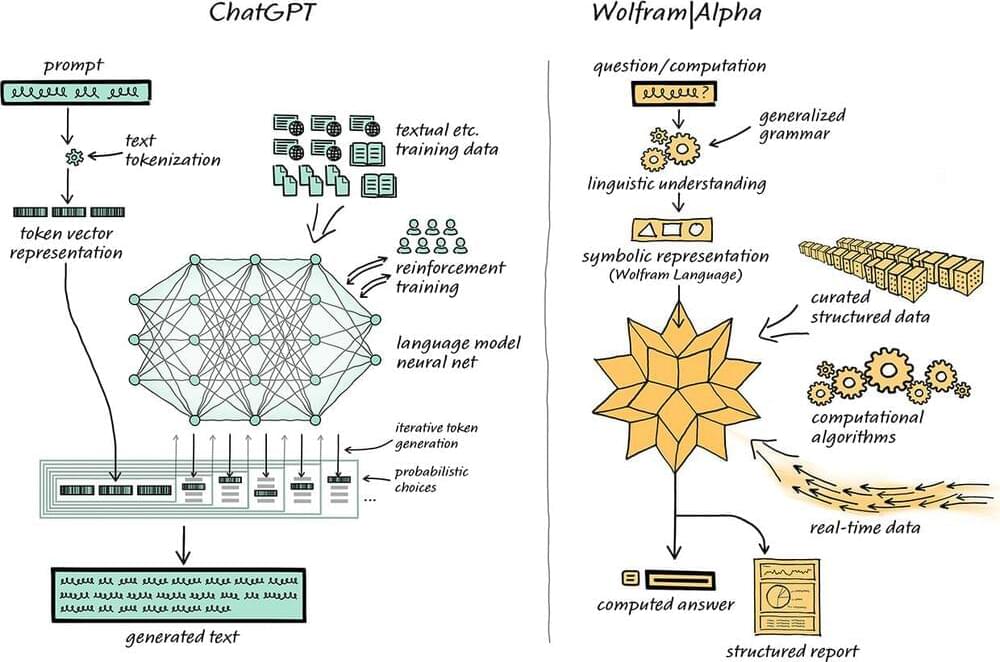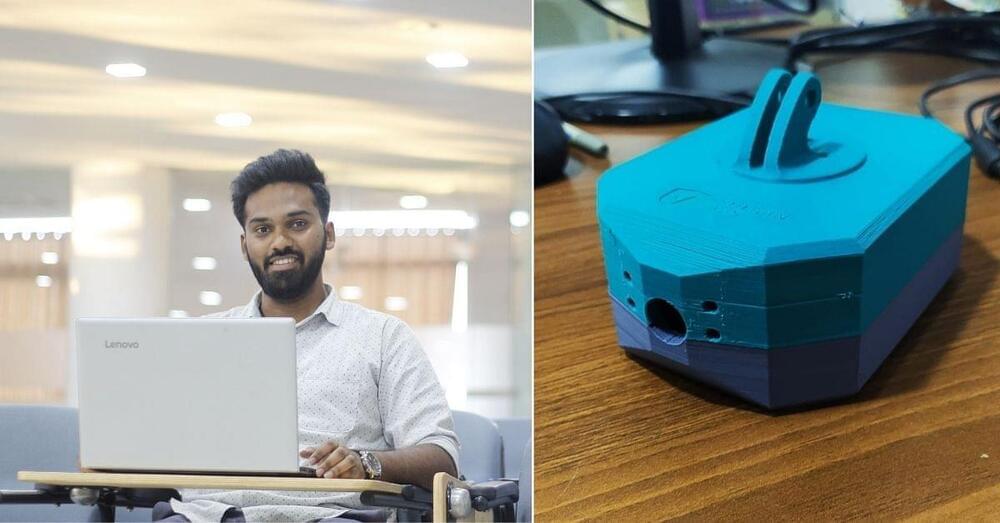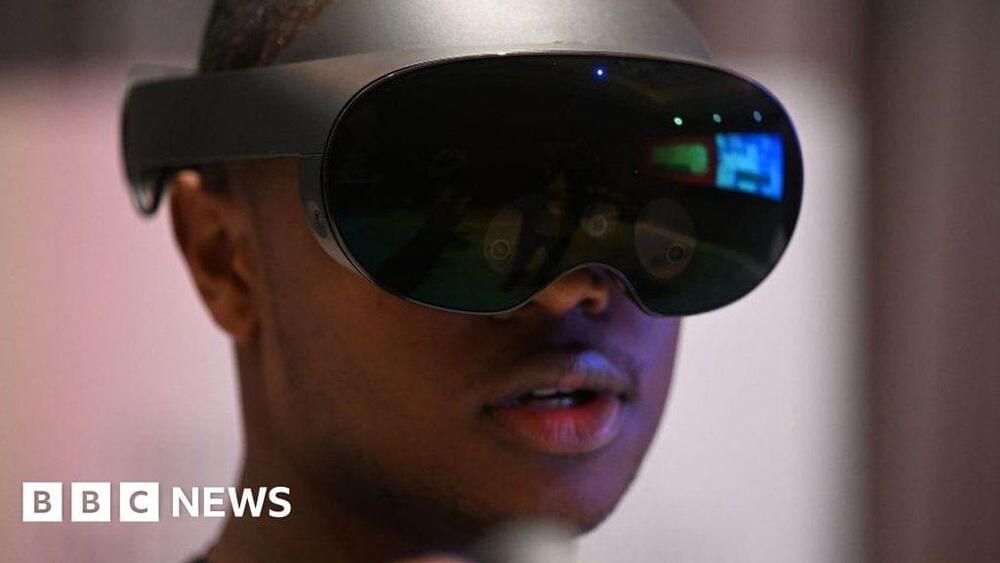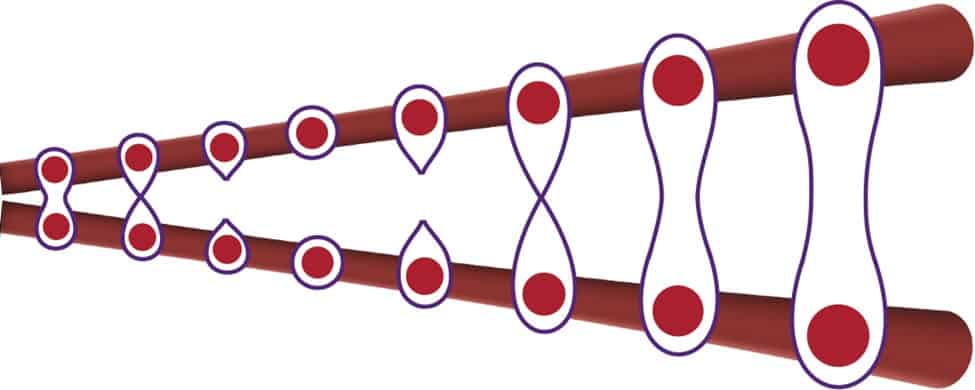Accessing Wolfram|Alpha’s computational knowledge with ChatGPT—an ideal alliance of precise combination with human-like expression of ideas. Stephen Wolfram explains how.



𝐁𝐫𝐚𝐢𝐧 𝐀𝐫𝐞𝐚 𝐍𝐞𝐜𝐞𝐬𝐬𝐚𝐫𝐲 𝐟𝐨𝐫 𝐅𝐥𝐮𝐢𝐝 𝐈𝐧𝐭𝐞𝐥𝐥𝐢𝐠𝐞𝐧𝐜𝐞 𝐈𝐝𝐞𝐧𝐭𝐢𝐟𝐢𝐞𝐝 — 𝐃𝐞𝐟𝐢𝐧𝐢𝐧𝐠 𝐅𝐞𝐚𝐭𝐮𝐫𝐞 𝐨𝐟 𝐇𝐮𝐦𝐚𝐧 𝐂𝐨𝐠𝐧𝐢𝐭𝐢𝐨𝐧
𝘼 𝙩𝙚𝙖𝙢 𝙡𝙚𝙙 𝙗𝙮 𝙐𝙣𝙞𝙫𝙚𝙧𝙨𝙞𝙩𝙮 𝘾𝙤𝙡𝙡𝙚𝙜𝙚 𝙇𝙤𝙣𝙙𝙤𝙣 (𝙐𝘾𝙇) 𝙖𝙣𝙙 𝙐𝙣𝙞𝙫𝙚𝙧𝙨𝙞𝙩𝙮 𝘾𝙤𝙡𝙡𝙚𝙜𝙚 𝙇𝙤𝙣𝙙𝙤𝙣 𝙃𝙤𝙨𝙥𝙞𝙩𝙖𝙡𝙨 (𝙐𝘾𝙇𝙃) 𝙧𝙚𝙨𝙚𝙖𝙧𝙘𝙝𝙚𝙧𝙨 𝙝𝙖𝙨 𝙢𝙖𝙥𝙥𝙚𝙙 𝙩𝙝𝙚 𝙥𝙖𝙧𝙩𝙨 𝙤𝙛 𝙩𝙝𝙚 𝙗𝙧𝙖𝙞𝙣 𝙩𝙝𝙖𝙩 𝙨𝙪𝙥𝙥𝙤𝙧𝙩 𝙤𝙪𝙧 𝙖𝙗𝙞𝙡𝙞𝙩𝙮 𝙩𝙤 𝙨𝙤𝙡𝙫𝙚 𝙥𝙧𝙤𝙗𝙡𝙚𝙢𝙨 𝙬𝙞𝙩𝙝𝙤𝙪𝙩 𝙥𝙧𝙞𝙤𝙧 𝙚𝙭𝙥𝙚𝙧𝙞𝙚𝙣𝙘𝙚 — 𝙤𝙩𝙝𝙚𝙧𝙬𝙞𝙨𝙚 𝙠𝙣𝙤𝙬𝙣 𝙖𝙨 𝙛𝙡𝙪𝙞𝙙 𝙞𝙣𝙩𝙚𝙡𝙡𝙞𝙜𝙚𝙣𝙘𝙚. 𝙁𝙡𝙪𝙞𝙙 𝙞𝙣𝙩𝙚𝙡𝙡𝙞𝙜𝙚𝙣𝙘𝙚 𝙞𝙨 𝙖𝙧𝙜𝙪𝙖𝙗𝙡𝙮 𝙩𝙝𝙚 𝙙𝙚𝙛𝙞𝙣𝙞𝙣𝙜 𝙛𝙚𝙖𝙩𝙪𝙧𝙚 𝙤𝙛 𝙝𝙪𝙢𝙖𝙣 𝙘𝙤𝙜𝙣𝙞𝙩𝙞𝙤𝙣. 𝙄𝙩 𝙥𝙧𝙚𝙙𝙞𝙘𝙩𝙨 𝙚𝙙𝙪𝙘𝙖𝙩𝙞𝙤𝙣𝙖𝙡 𝙖𝙣𝙙 𝙥𝙧𝙤𝙛𝙚𝙨𝙨𝙞𝙤𝙣𝙖𝙡 𝙨𝙪𝙘𝙘𝙚𝙨𝙨, 𝙨𝙤𝙘𝙞𝙖𝙡 𝙢𝙤𝙗𝙞𝙡𝙞𝙩𝙮, 𝙝𝙚𝙖𝙡𝙩𝙝, 𝙖𝙣𝙙 𝙡𝙤𝙣𝙜𝙚𝙫𝙞𝙩𝙮. 𝙄𝙩 𝙖𝙡𝙨𝙤 𝙘𝙤𝙧𝙧𝙚𝙡𝙖𝙩𝙚𝙨 𝙬𝙞𝙩𝙝 𝙢𝙖𝙣𝙮 𝙘𝙤𝙜𝙣𝙞𝙩𝙞𝙫𝙚 𝙖𝙗𝙞𝙡𝙞𝙩𝙞𝙚𝙨 𝙨𝙪𝙘𝙝 𝙖𝙨 𝙢𝙚𝙢𝙤𝙧𝙮.
A team led by University College London (UCL) and University College London Hospitals (UCLH) researchers has mapped the parts of the brain that support our ability to solve problems without prior experience – otherwise known as fluid intelligence.
Fluid intelligence is arguably the defining feature of human cognition. It predicts educational and professional success, social mobility, health, and longevity. It also correlates with many cognitive abilities such as memory.
Fluid intelligence is thought to be a key feature involved in “active thinking” – a set of complex mental processes such as those involved in abstraction, judgment, attention, strategy generation, and inhibition. These skills can all be used in everyday activities – from organizing a dinner party to filling out a tax return.
This Video Explains piRNA (piwi Interacting RNA)
Reference: https://www.researchgate.net/figure/Mechanisms-of-regulation…_326569449
Thank You For Watching.
Please Like And Subscribe to Our Channel: https://www.youtube.com/EasyPeasyLearning.
Like Our Facebook Page: https://www.facebook.com/learningeasypeasy/
Join Our Facebook Group: https://www.facebook.com/groups/460057834950033
Support Our Channel: https://www.patreon.com/supereasypeasy

I n 2017, Andhra Pradesh witnessed two deadly bus accidents after the driver fell asleep at the wheel. One was a tourist bus and the other a school bus carrying children and teachers.
This news concerned Pradeep Varma (22), a student of Gayatri Vidya Parishad College of Engineering, Visakhapatnam. It left him wondering why there was no technology in place to prevent such accidents.
“After doing some research, I realised that while there is technology to detect external crashes and predict them, there aren’t many prevalent ones to detect a driver falling asleep,” says Pradeep, in an interview with The Better India.

This post is also available in:  עברית (Hebrew)
עברית (Hebrew)
New research may have vital applications in areas such as human-intelligence analytics. Traditionally, emotion detection has relied on the assessment of visible signals such as facial expressions, speech, body gestures or eye movements. However, these methods can be unreliable as they do not effectively capture an individual’s internal emotions. A novel artificial intelligence approach based on wireless signals could help to reveal our inner emotions.
The research from Queen Mary University of London demonstrates the use of radio waves to measure heart rate and breathing signals and predict how someone is feeling even in the absence of any other visual cues, such as facial expressions. It demonstrates how to apply a neural network to decipher emotions gathered with transmitting radio antenna.
True mind reading is finally HERE! Join us, and find out more!
Subscribe for more ► https://wmojo.com/unveiled-subscribe.
In this video, Unveiled takes a closer look at a major breakthrough in the quest toward true MIND READING! After years of work, scientists have produced a Brain Computer Interface (BCI) that really DOES enable communication without physical speech… and it’s a total game changer in the field!
This is Unveiled, giving you incredible answers to extraordinary questions!
Find more amazing videos for your curiosity here:
The Different Types of Time Travel You Should Know About — https://youtu.be/jp_QID7dkj8
What is Element 115 and is the Government Hiding it From Us? — https://youtu.be/fSdMR4L_3hI
0:00 Intro.



I love it.
Why would a crow need a train ticket? To be honest, we’re not really sure but that didn’t stop one eager bird attempting to purchase a ride from a ticket machine at Tokyo’s Kinshichō Station.
Twitter user @kinoshi42155049 posted a video of the inquisitive crow having a nosey around the ticket machine before it hopped across to the adjacent machine, stole a woman’s credit card, and tried to slot it into the card reader. It didn’t quite succeed in its mission to buy the ticket but it came impressively close.

Generating, losing and reviving entanglement
In their experiment, the researchers generated entangled photons by sending light from a high-power “pump” laser into a nonlinear crystal. Under conditions where the photons’ energies and momenta are conserved, one pump photon will produce two entangled photons in a process called spontaneous parametric down conversion (SPDC). The two photons are entangled in all their properties. If a photon is detected at one location, for example, the position of the other entangled photon is automatically determined. The correlation exists for other quantities as well, such as momentum, angular position and orbital angular momentum.
As seen through the witness without any corrective measures, the researchers observed that position entanglement between photons disappears after about 4 cm of propagation. On the other hand, something interesting happens for angular-position entanglement. It disappears after about 5 cm of propagation, but after the photons have travelled another 20 cm, entanglement appears again (see figure). The researchers corroborated their experimental results qualitatively with a numerical model.